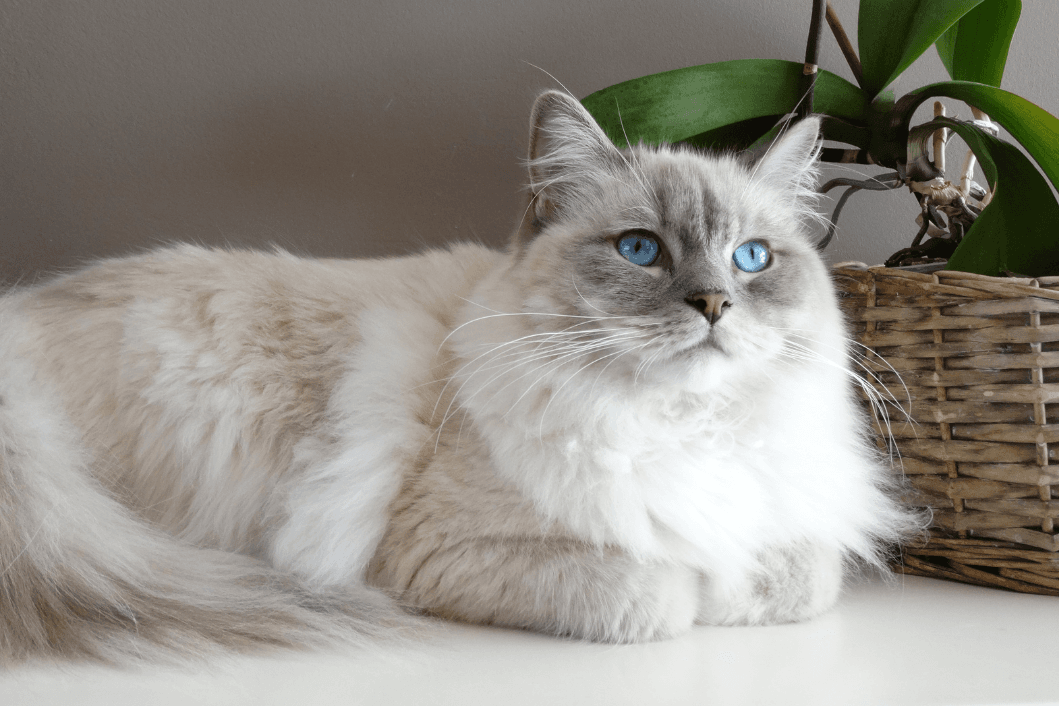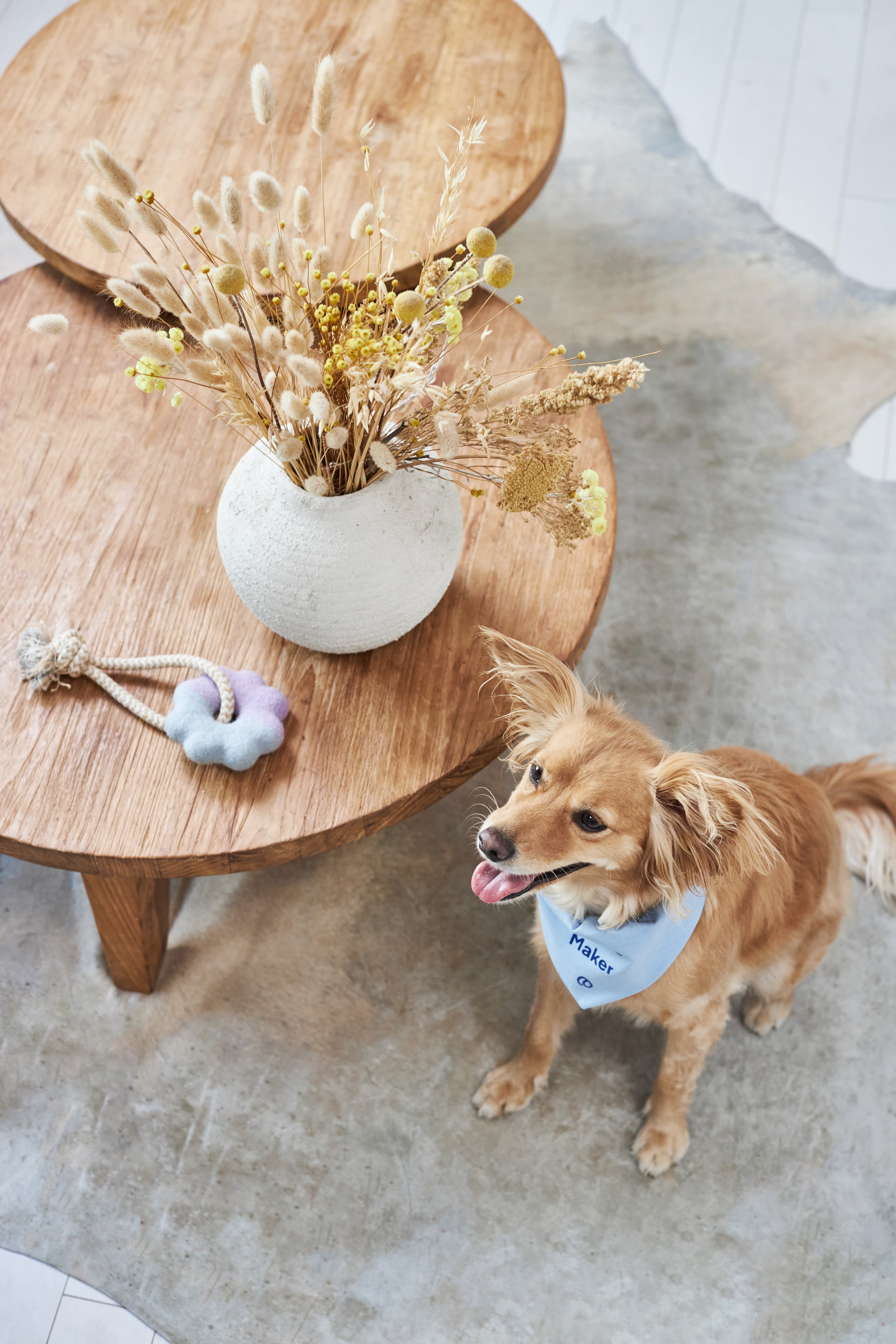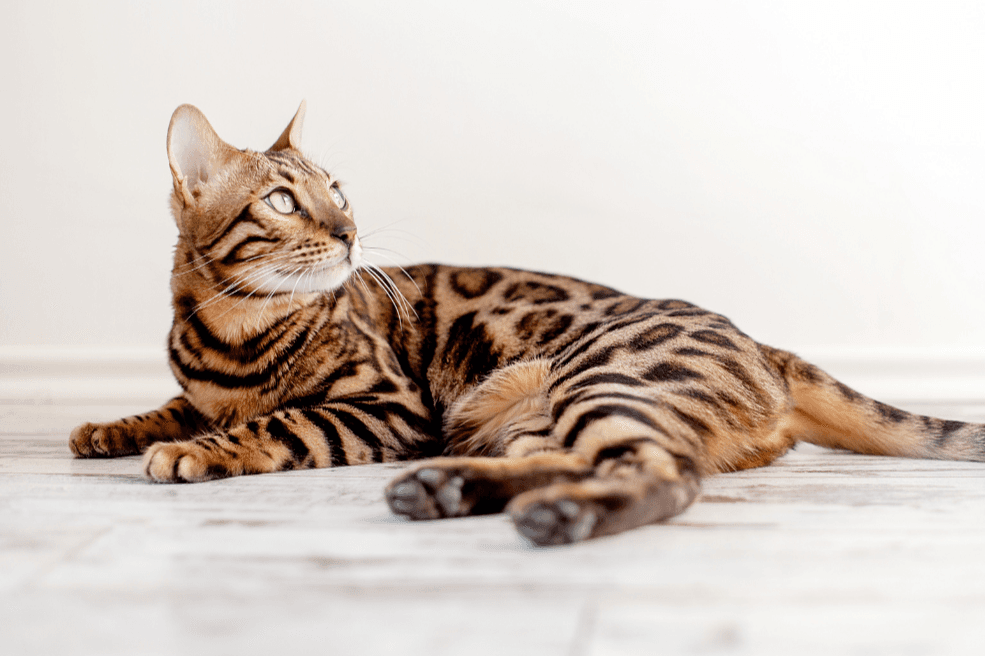Ragdoll Guide
Information about the cat breed Ragdoll
Weight: Males 6 - 9 kg, females 4 - 6 kg
Wither height: Up to 40 cm
Energy level: Calm
Lifespan: 7 - 12 years
Social need: Great
Colours: The Ragdoll is masked and can have different patterns such as point, mitten and bicolor. The colours can vary between, for example, frost white, brown, chocolate, blue, seal grey, purple and red.
Health problems: Generally healthy but can suffer from Hypertrophic Cardiomyopathy (HCM) which is a hereditary heart disease and Polycystic Kidney Disease (PKD) which is a hereditary disease affecting the kidneys.
Personality of a Ragdoll
The Ragdoll cat breed is known for being calm, loving and affectionate. The breed got the name ragdoll because it means "rag doll". Namely, it behaves a bit like one when you lift it, as it often does not touch a muscle or offer any resistance. Ragdolls like to cuddle, follow their cat parents wherever they go, and often get along well with other animals. A lot of play and activation is necessary for the sake of health and well-being, but is preferably done in calmer ways. Ragdolls are mainly suitable as indoor cats and as indoor cats they need to be able to climb and scout out, for example with the help of a cat tree.
Looks and fur care of a Ragdoll
Ragdoll is a large, muscular and powerful cat breed with long and soft fur. It develops slowly and it can take several years for a ragdoll to fully grow - but eventually it can weigh up to 9 kg. Distinctive for the breed's appearance is also that it is masked and has blue eyes. The fur lies close to the body and sheds a little when the cat moves. Ragdolls also shed a lot and require some fur care, but the fur is also easy to care for because it has almost no underhair. Brush the coat a couple of times a week to detangle any tangles and keep it well maintained.
Health problems in a Ragdoll
Ragdolls generally do not have many health problems, but like other cat breeds, they can suffer from certain hereditary diseases. Hypertrophic cardiomyopathy (HCM) is an inherited heart disease in ragdolls that can lead to thickening of the heart muscle, which can affect the heart's ability to pump blood effectively. Polycystic kidney disease (PKD) is an inherited disease that affects the kidneys. It can affect the cat's kidney function and lead to kidney failure if not managed properly. Ragdolls also have a tendency to become overweight.
Weight control
Obesity is a common problem among Sweden's cats today, and Ragdolls in particular become overweight easily because they are a calm and food-loving cat breed. Being overweight means an increased risk factor for many common diseases among cats. You therefore need to help your cat maintain a healthy weight, learn more about it in the Lassie app.
Oral health
Did you know you need to brush your cat's teeth? Brushing your cat's teeth daily is the best thing you can do to prevent your cat from getting periodontitis, learn more about it in our app. The dental disease FORL is common among cats and often occurs in connection with periodontitis. Brushing the cat's teeth can be a challenge, but with treats and a lot of patience, the cat will eventually get used to it. Learn more about how to brush your cat's teeth in our app course.
Poisoning
There are a lot of things that are toxic to cats that you may not have thought about before. An example of this is plants, learn more about which plants are poisonous to your cat in the Lassie app. Additional examples of what is poisonous to cats are chocolate and mouse and rat poison. It is important to store things that are dangerous to cats in a place that they cannot access.






